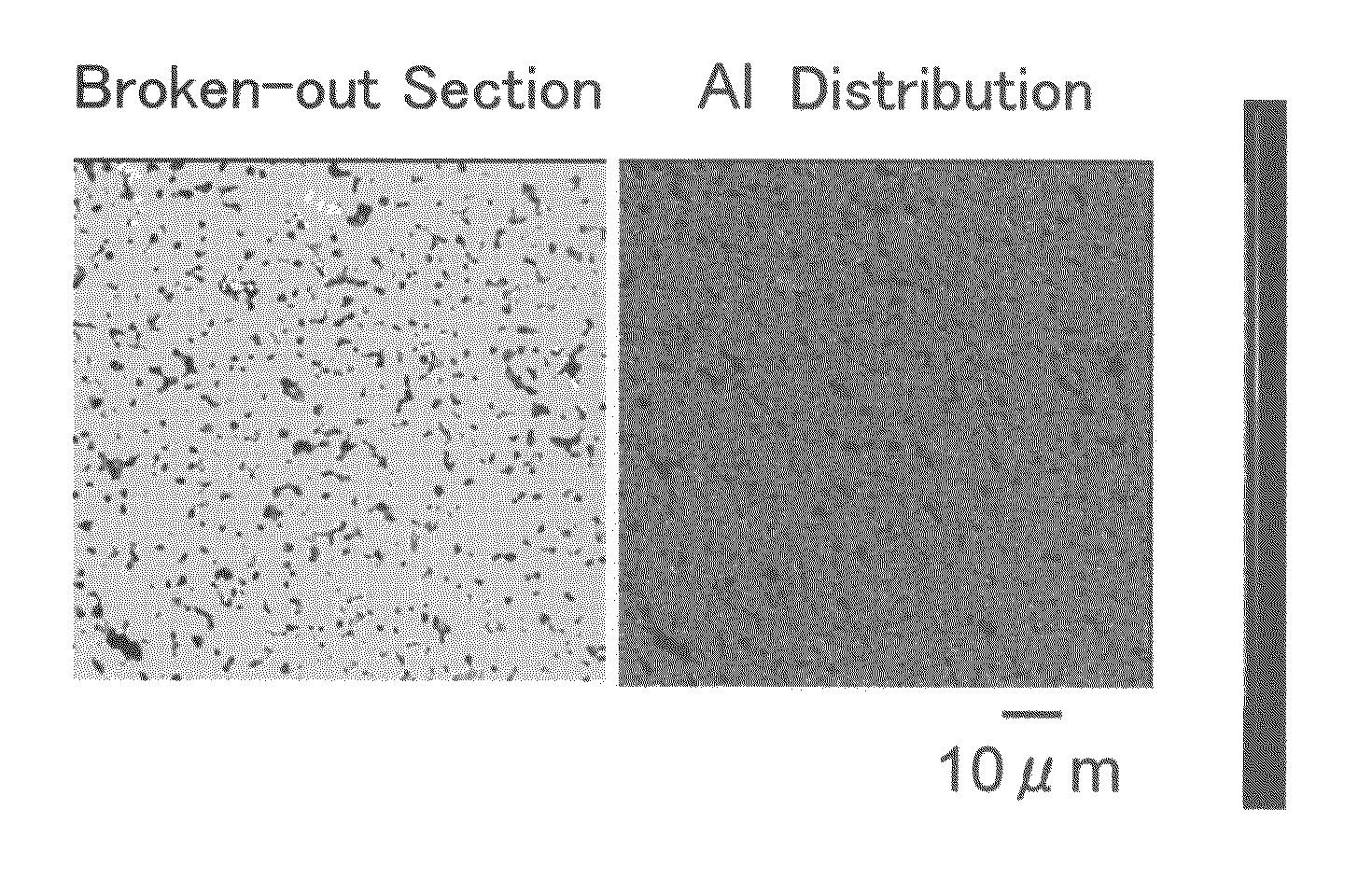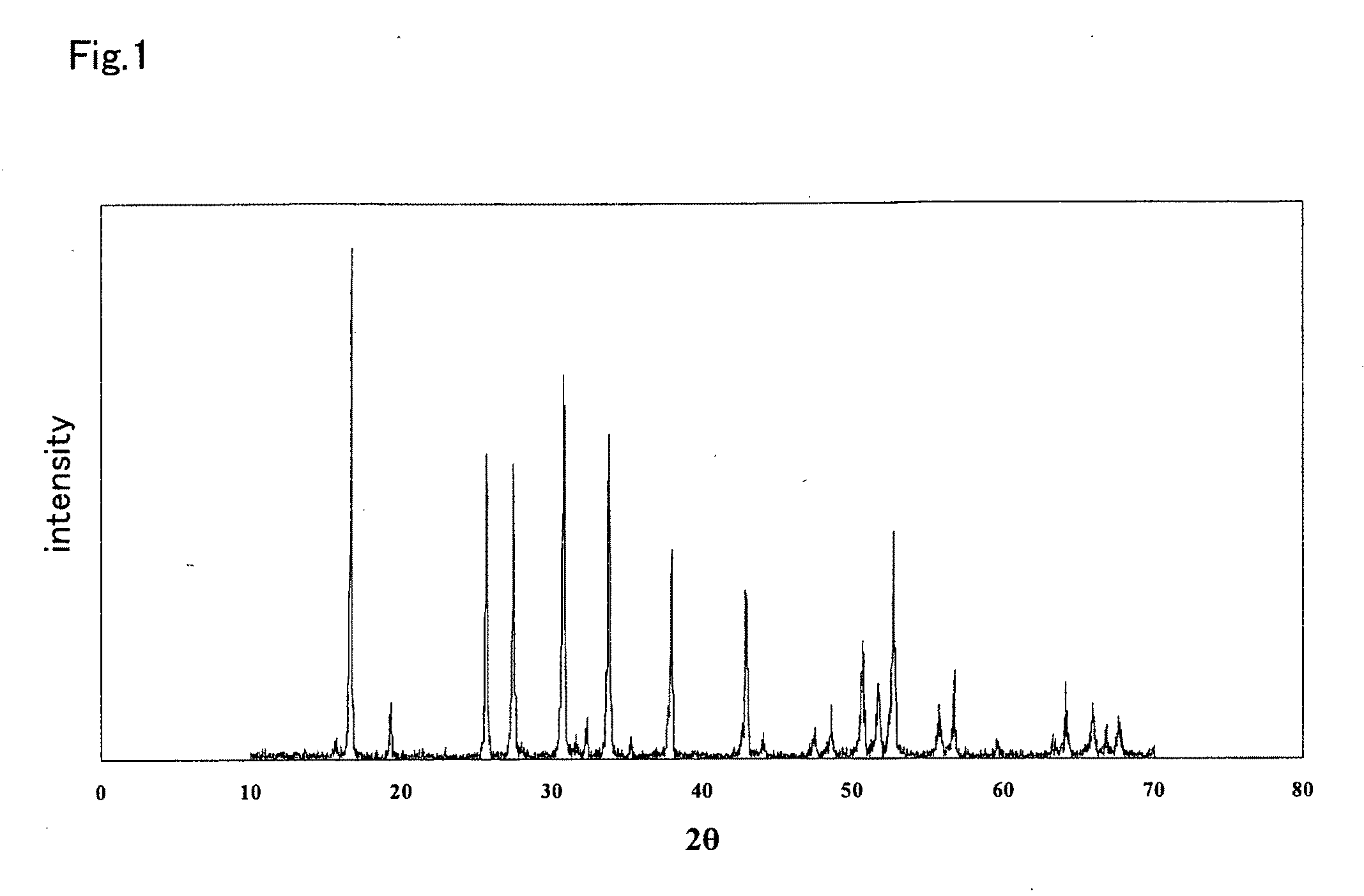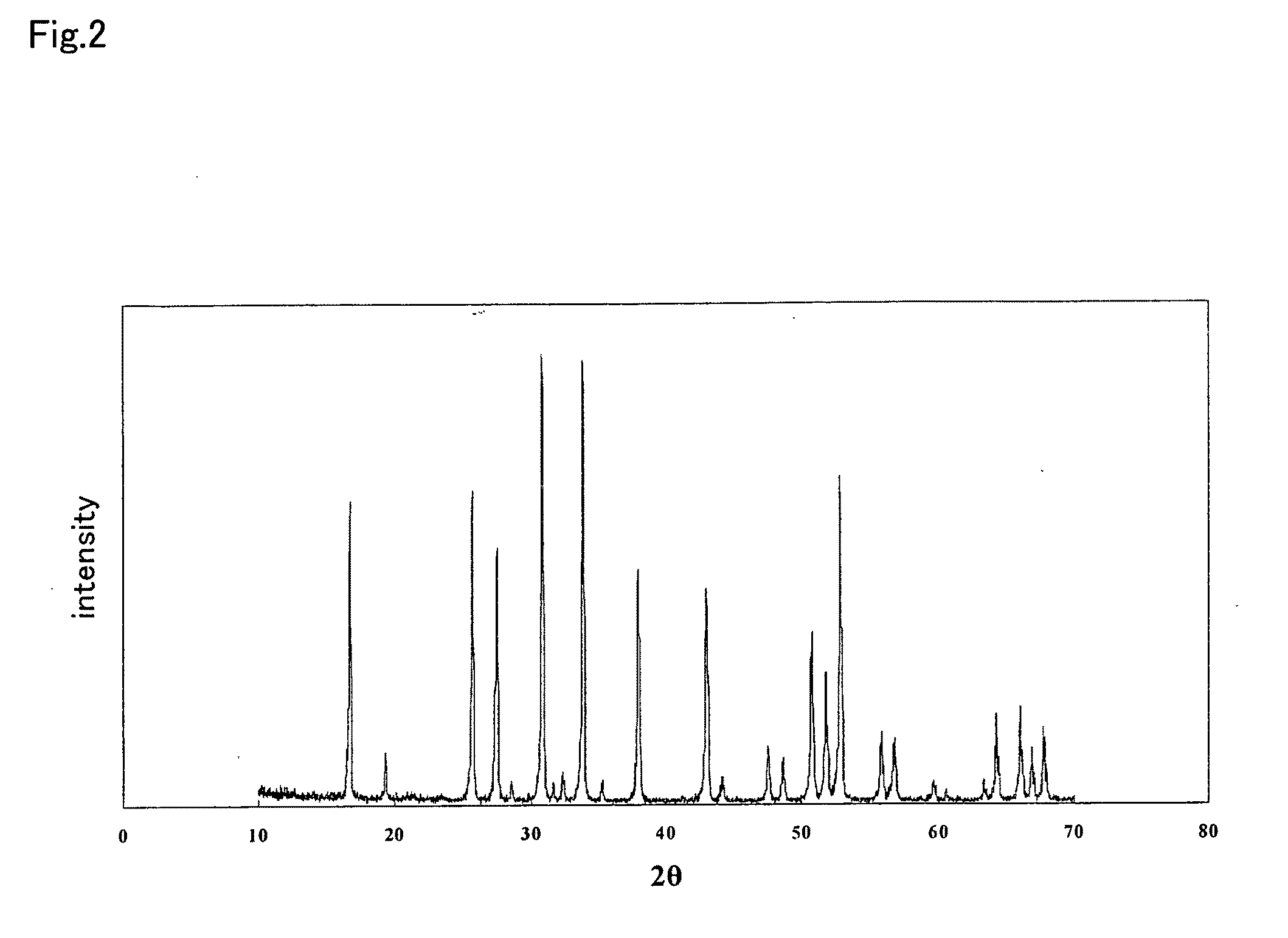Ceramic material and process for producing the same
a ceramic material and process technology, applied in the direction of non-aqueous electrolyte cells, cell components, electrochemical generators, etc., can solve the problems of not being considered a material that can be practically applied as a solid electrolyte for an all-solid-state lithium secondary battery, and the inability to obtain llz pellets. to achieve the effect of compactness and conductivity
- Summary
- Abstract
- Description
- Claims
- Application Information
AI Technical Summary
Benefits of technology
Problems solved by technology
Method used
Image
Examples
example 1
Synthesis of Li—La—Zr Ceramic Containing Aluminum
Preparation of Starting Material
[0068]As the starting material, lithium carbonate (Honjo Chemical Corporation), lanthanum hydroxide (Shin-Etsu Chemical Co., Ltd.), and zirconium oxide (Tosoh Corporation) were weighed out to obtain a molar ratio of 3.85:3:2. These powders were mixed with a mortar machine to make the starting material powder.
(First Firing Step)
[0069]The aforementioned starting material powder was placed in an alumina crucible, and the temperature was raised at 600° C. / h and then maintained at 900° C. for 6 h. After the heat treatment, the part of the powder in contact with the alumina crucible (about half of the powder by weight) was removed, and the powder not in contact with the crucible was collected, pulverized for 30 min in a mortar machine, and placed into an alumina crucible again. The temperature was raised at 600° C. / h and then maintained at 1125° C. for 6 h.
(Second Firing Step)
[0070]After the first firing step...
example 2
Synthesis of Li—La—Zr Ceramic Containing Aluminum
Preparation of Starting Material
[0080]Lithium hydroxide monohydrate, lanthanum hydroxide (Shin-Etsu Chemical Co., Ltd.), and zirconium oxide (Tosoh Corporation) were used as the components of the starting material. These powders were weighed out to obtain a LiOH:La(OH)3:ZrO2 molar ratio of 7:3:2. The powders were mixed in a mortar machine to prepare the starting material powder.
[0081]Lithium hydroxide monohydrate, lanthanum hydroxide (Shin-Etsu Chemical Co., Ltd.), and zirconium oxide (Tosoh Corporation) were used as the starting materials.
(First Heat Treatment Step)
[0082]The aforementioned starting material powder was placed in an alumina crucible, and the temperature was raised at 600° C. / h and then maintained at 900° C. for 6 h.
(Second Heat Treatment Step)
[0083]After the heat treatment, the powder was mixed with ball like media and ground for 3 h using a vibrating mill. After grinding the powder was passed through a sieve and γ-Al2...
example 3
Preparation of Starting Material
[0093]Lithium hydroxide, lanthanum hydroxide (Shin-Etsu Chemical Co., Ltd.), and zirconium oxide (Tosoh Corporation) were used as the components of the starting material. These powders were weighed out to obtain a LiOH:La(OH)3:ZrO2 molar ratio of 7:3:2. The powders were mixed in a mortar machine to prepare the starting material powder.
(First Heat Treatment Step)
[0094]The aforementioned starting material powder was placed in an alumina crucible, and the temperature was raised at 600° C. / h and then maintained at 900° C. for 6 h.
(Second Heat Treatment Step)
[0095]After the heat treatment, γ-Al2O3 was added at a concentration of 1.5 wt % relation to the powder, that powder was mixed with ball like media and ground for 3 h using a vibrating mill. After grinding the powder was passed through a sieve and then press-formed at 300 MPa using a mold. The pellets were placed on an alumina setter, each setter was placed in an alumina sheath, and the temperature was...
PUM
| Property | Measurement | Unit |
|---|---|---|
| Temperature | aaaaa | aaaaa |
| Fraction | aaaaa | aaaaa |
| Fraction | aaaaa | aaaaa |
Abstract
Description
Claims
Application Information
 Login to View More
Login to View More - R&D
- Intellectual Property
- Life Sciences
- Materials
- Tech Scout
- Unparalleled Data Quality
- Higher Quality Content
- 60% Fewer Hallucinations
Browse by: Latest US Patents, China's latest patents, Technical Efficacy Thesaurus, Application Domain, Technology Topic, Popular Technical Reports.
© 2025 PatSnap. All rights reserved.Legal|Privacy policy|Modern Slavery Act Transparency Statement|Sitemap|About US| Contact US: help@patsnap.com



